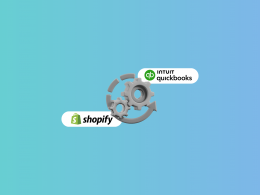🤔 What is the Average Order Value Report?
However big your traffic and conversion numbers are, you cannot ignore the average order value (AOV). Healthy AOV is an important metric that lots of e-commerce businesses keep an eye on as it gives them essential insights into how effective their marketing and pricing strategies are, how profitable a business is, and what patterns of behavior their customers follow.
AOV helps you to track the average dollar amount a customer spends each time they place an order via your website, app or in-store. For example, let’s say in November your store earns a total revenue of $3,000 for 100 orders, your average order value in November is $30. What it means is that a customer spent on average $30 for each purchase with you during this period.
This key performance indicator is typically used by companies in order to measure their customers’ purchasing habits over a monthly period, but can also be tracked for any other timeframe.
⚖️ How is the Average Order Value Report calculated?
In order to measure your company’s average order value you’ll need the following formula:
AOV = Total revenue / Number of orders
The formula involves 3 steps:
- Calculate the total revenue of your business per period.
- Find out the number of orders your business had in the selected period.
- Divide the total revenue by the total number of orders and arrive at your AOV.
While you can calculate it manually when you need it, why not leave it to automated software? With Synder Insights you can forget about the stress of going through the numbers at the last minute and checking for discrepancies. This all-in-one source of truth allows e-commerce businesses to track their KPIs and provides instant access to numerous reports, including average order value.
To calculate the Average Order Value Report, Synder adds up all the orders in a selected time period and divides them by the total number of transactions.
🔎 What do these numbers tell us?
Average order value serves as a benchmark for your customers’ behavior and purchasing patterns. For example, if the AOV is low, it’s usually an indication that your customers tend to make small purchases in each order.
Knowing your store’s average order value allows you to evaluate your customer lifetime value (LTV), marketing efforts as well as the overall pricing strategy, which lets you make informed decisions, such as setting goals and enhancing/tailoring the selected strategies in the long run.
Average order value also illustrates the profitability – the greater the number, the larger the revenue. That’s why a considerable number of e-commerce businesses strive to improve this metric and consequently increase revenue and optimize return on ad spend.
📈 What can be done to grow sales based on these numbers?
The Average Order Value Report helps you maximize your sales by providing you with some valuable information on people who already want to buy. What you have to do is just help these people discover more relevant items. Customer acquisition costs more than increasing AOV and it’s something that each business has to keep in mind.
There are several ways to attract and activate your existing customers:
- Cross-selling and up-selling
Urge your customers to buy complementary products or more expensive versions of the products they already have in their carts. Prompting your customers to increase their order value with the help of suggestions is always a good idea.
- Bundling
Create product bundles that cost less than if purchased individually. Very often buying multiple products at a reduced price appeals to customers who don’t want to spend additional time searching for more.
- Offering free shipping and returns
Incentivize a higher purchase with a ‘free shipping’ option for a minimum order value. Customers tend to add more items to their carts when there’s a threshold for shipping, even if it means spending more.
- Offering discounts and coupons
Encourage customers to increase their order value so that they can come back for more or get their favorite items at a reduced price.
- Setting up a customer loyalty program
The goal of any loyalty program is to forge the relationship between retailers and customers. Not only does it help to entice customers to buy more, but also helps to reduce customer churn. Spend some time thinking it through, especially if your store sells consumable products.
Overall, the crucial point with AOV is that you have to understand your customer base. Find what works for them and what makes them tick and you’ll be able to increase your revenue.
Let Synder Insights do the numbers so that you can focus on the right strategies for your business!







